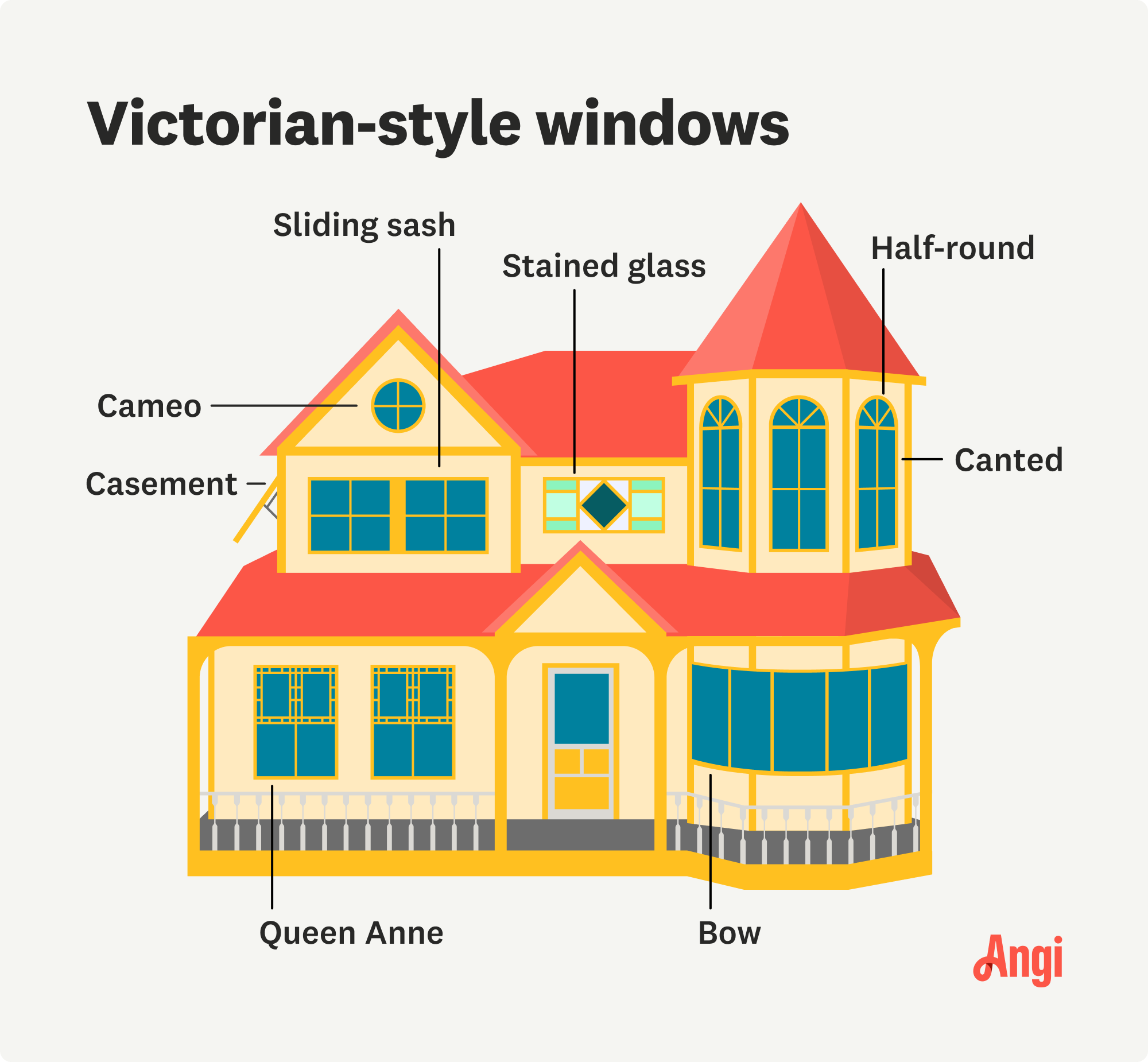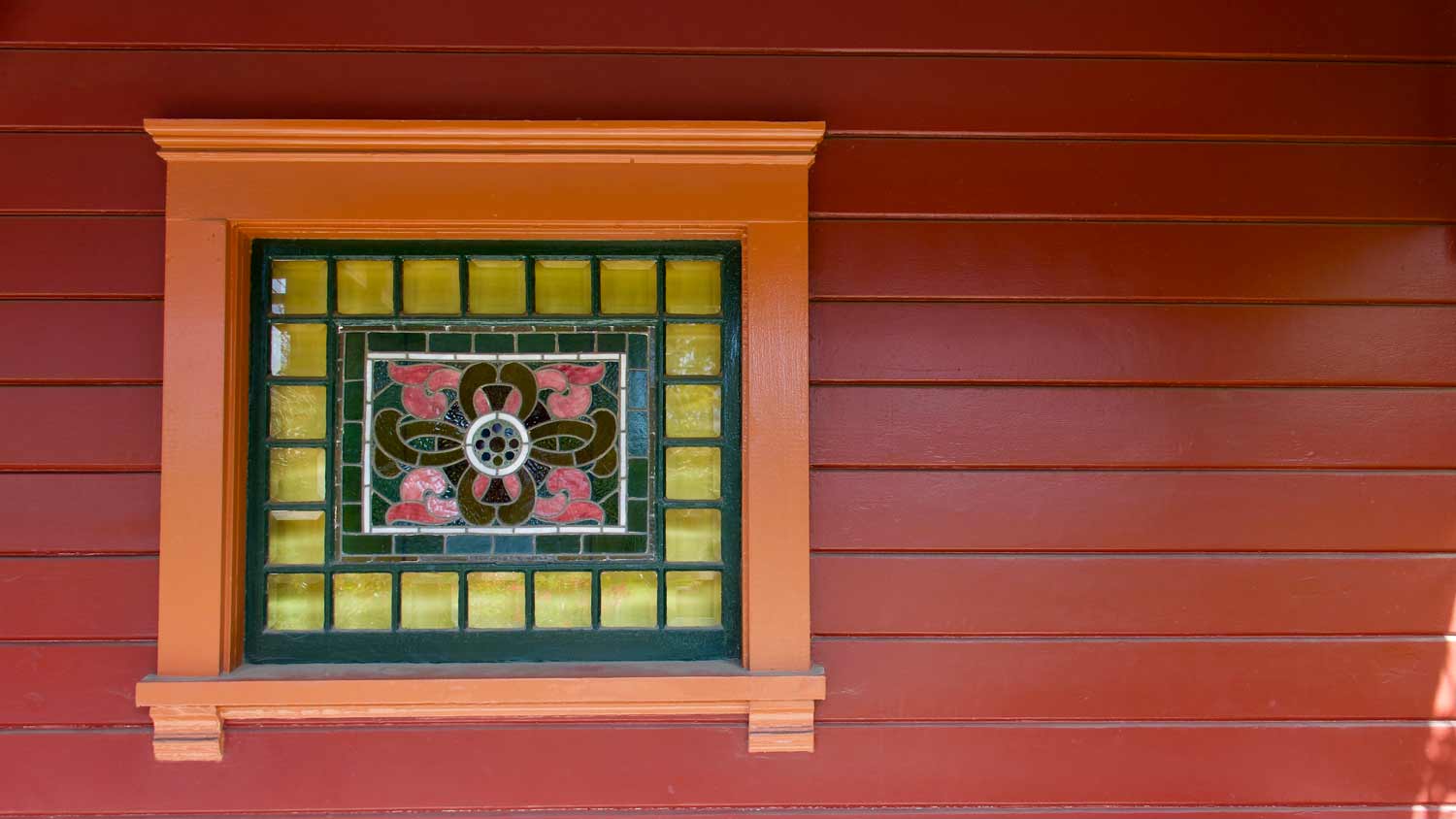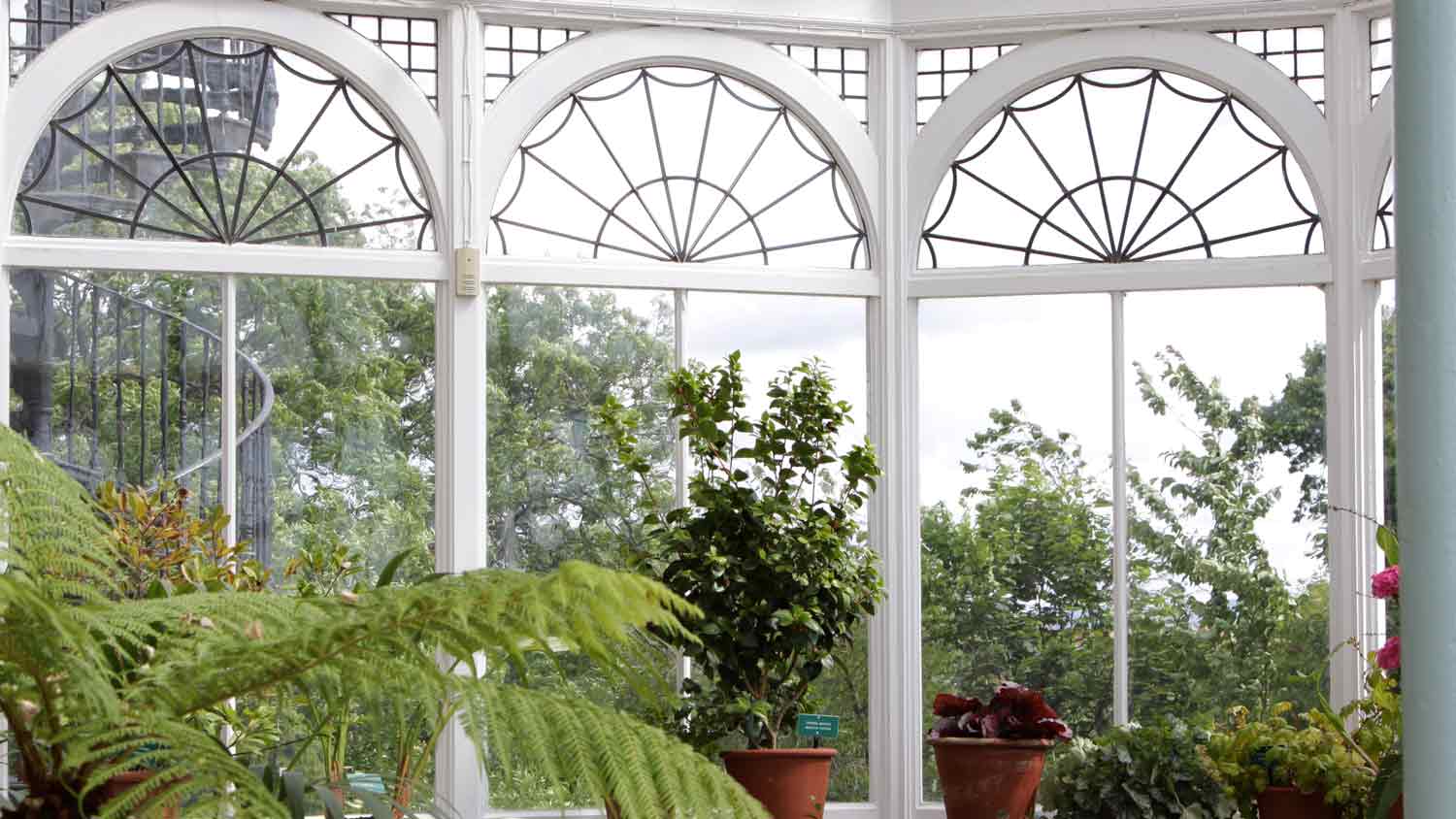
Discover the energy-efficient window costs. Learn about installation prices, cost factors, and tips to save money on your window upgrade.
Sliding sashes, stained glass, and bay windows, oh my!


Victorian homes are marked by their grandeur: massive staircases, beautiful hardwood floors, intricate paneling and tile, floral wallpaper, complex towers and turrets, and, yes, ornate windows. But because the era lasted more than 60 years, Victorian windows encompass a lot of unique styles. Below, we’ll explore Victorian architecture and take a look at some of the most common Victorian house windows (with pictures!).

The Victorian era refers to the reign of Queen Victoria in Great Britain from 1837 to 1901. While the style originated in England, it influenced architectural styles across the globe, including in the United States.
During this time, people began amassing more wealth, and the Industrial Revolution made it easier to manufacture and transport new materials, like roofing slate, machine-made bricks, and, most importantly for Victorian windows, plate glass.
We often conflate two terms from this time period: Victorian architecture and Queen Anne architecture. In reality, Victorian refers to the 64-year era during which we explored several architectural styles; Queen Anne is just the most famous of those styles (and came at the tail end of the time period).
The architectural styles of the Victorian era overlapped and varied by country, but they did all share some similarities. In general, these different styles were marked by larger, taller windows, many with arches and often double-hung.

So if the Victorian era was so extensive and blended multiple architectural styles, what do Victorian windows actually look like?
Victorian windows are larger than their predecessors (from the Georgian era). Often, they’re tall and slim.
Victorian windows are ornate, sometimes using stained glass, art glass, or other decorative materials.
Victorian windows are typically double-hung with a vertical strip down the center and often a half-round window above.
While windows vary depending on the architectural style, there are several common Victorian-style windows typical of the time period.


Sliding sash windows became immensely popular during the Victorian era. These windows open vertically and use a two-over-two design: two panes on the top sash and two panes on the bottom sash, as if a plus sign divides the full window. This departure from six-over-six Georgian windows was largely due to the mass production of large glass plates during this time period.

Victorian architecture uses a lot of towers and turrets, which left plenty of room for bay windows. On the first floor of Victorian homes, it is common to find canted bay windows (a flat front and then two angled sides, each with its own (usually two-over-two) window.
Up higher, you might see box bay windows. As the name suggests, these bay windows are shaped like a box hanging out from the house with windows on all three sides that meet at 90-degree angles.
Thinking about adding a bay window to your home? Budget around $2,350; that’s the average cost to install a bay window nowadays.

Bow windows are another common hallmark of Victorian homes, also in the tower sections. In some cases, bow window glass might even be curved.
Though similar to bay windows, there are a few distinct differences between bay and bow windows. One key difference? Price. Bow windows cost $3,900 on average.

Patterned stained glass became very popular for homes during the Victorian era, especially as the middle class expanded and people wanted to show off their wealth. You might find stained glass on interior windows (between rooms) of a Victorian home or on a special decorative window on the side of the house or on an upper floor.
If you have a Victorian home with a damaged stained-glass window, don’t rush to replace it with something less elaborate. Depending on the extent of the damage, stained glass window repair costs between $175 and $425. In fact, that’s probably more affordable than the cost of replacing the window with something new (and you get to keep this unique, historical architectural element).

Casement windows, which swing out to let in fresh air, represent the earliest type of opening windows, and Victorian homes made great use of them. Homes from the Victorian era often have more ornate casement windows with glazing bars.

Without a doubt, Queen Anne homes are the most popular style from the Victorian era—they’re the ones most people think of when they hear “Victorian homes.”
Queen Anne architecture uses a lot of the window styles discussed throughout this guide, but a true hallmark of a Queen Anne window is the elaborate upper sash. While the Victorian era was dominated by the reduction of panels (from six-over-six to two-over-two windows), Queen Anne homes began to re-explore more complex upper sashes with several panes using decorative art glass or a grille pattern using colored glass.
Some Queen Anne top sashes may have simply had a border of smaller, decorative panes. Others may have been more involved. The style eventually expanded to transoms and other types of windows as well.

A hallmark of Victorian homes is the half-round (or half-moon) windows directly above the tall, slim two-over-twos, often on the second and third floors. These picture windows sometimes use decorative glass. Tall windows, topped by the half-round window, help create the illusion of a taller, grander home.

The half-round windows above the two-over-twos aren’t the only picture windows you’ll find on Victorian homes. Often, Victorian houses have cameo (rounded) windows in gables or along walls to deliver more light into the home.
If you own a Victorian home with the original windows, it’s worth preserving these for their historical value. They’re often well-made and may attract potential buyers when you’re ready to sell.
Still, older windows often need some TLC to stay operable and energy-efficient. Rather than replace historic windows, find out what repair options are available and if storm windows can boost your energy efficiency without completely replacing the windows. You can also explore other ways to make your windows more energy-efficient.
If the original windows are beyond repair or leading to skyrocketing energy bills, work with a trusted window replacement company near you to find replacement window options that complement the Victorian style of your home.
From average costs to expert advice, get all the answers you need to get your job done.

Discover the energy-efficient window costs. Learn about installation prices, cost factors, and tips to save money on your window upgrade.

Smart glass makes your home more comfortable and energy-efficient, but at what price? Learn how much smart glass costs and if it’s a good option for you.

Single, double, or cottage-style, the cost of casement windows is worth it for their versatility alone. Let's look at casement window costs plus installation.

Follow these step-by-step instructions to fix a cracked window yourself and avoid a costly replacement using two-part resin and basic tools.

Want a quieter home? Learn how to soundproof windows with seven practical methods that block noise and boost comfort—light sleeper and city dweller approved.

Is your casement window not opening or closing properly? Read this guide to learn how to fix your window crank—no professional help needed.